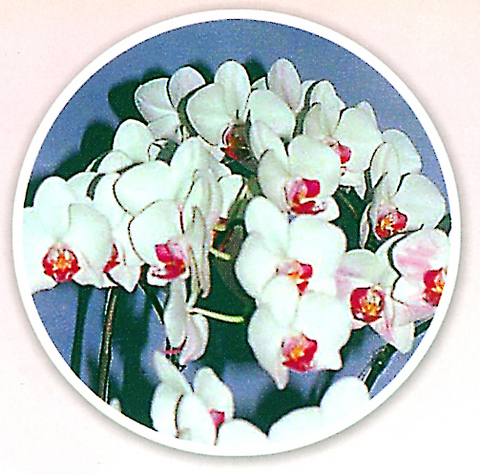We think of tulips and Amsterdam, kiwi fruit and New Zealand. Soon, the world may be associating orchid flowers with Taiwan -- in particular the phalaenopsis species (蝴蝶蘭).
Since last year, the government has channeled a lot of effort into setting up a show at the Taiwan Orchid Plantation (TOP) in Hobi (

PHOTO COURTESY OF COUNCIL OF AGRICULTURE
The TOP project will provide an investment fund of NT$2.06 billion to develop a land area of 200 hectares and is scheduled to complete the task in 2008.
This Tuesday, the orchid exhibition in Tainan opened to the public for 12 days. Magnificent flowers such as Taiwan phalaenopsis (
Big crowds have been attracted to the show every day, but the activity will end on Jan. 2. Those who miss the exhibition this time round can catch the international orchid show in March, next year, also in Hobi.
According to Lin Feng-pei (
Severe competition is coming from the US, the Netherlands and Japan, Orchid growers from the Dominican Republic, Costa Rica and China are also boosting their exports.
A recent report in FloraCulture International suggests the orchid is the most popular plant in Holland and Japan. In the US, it is second in popularity only to the poinsettia, or "Christmas red," as it's called in Taiwan.

One of the biggest sore spots in Taiwan’s historical friendship with the US came in 1979 when US president Jimmy Carter broke off formal diplomatic relations with Taiwan’s Republic of China (ROC) government so that the US could establish relations with the People’s Republic of China (PRC). Taiwan’s derecognition came purely at China’s insistence, and the US took the deal. Retired American diplomat John Tkacik, who for almost decade surrounding that schism, from 1974 to 1982, worked in embassies in Taipei and Beijing and at the Taiwan Desk in Washington DC, recently argued in the Taipei Times that “President Carter’s derecognition

This year will go down in the history books. Taiwan faces enormous turmoil and uncertainty in the coming months. Which political parties are in a good position to handle big changes? All of the main parties are beset with challenges. Taking stock, this column examined the Taiwan People’s Party (TPP) (“Huang Kuo-chang’s choking the life out of the TPP,” May 28, page 12), the Democratic Progressive Party (DPP) (“Challenges amid choppy waters for the DPP,” June 14, page 12) and the Chinese Nationalist Party (KMT) (“KMT struggles to seize opportunities as ‘interesting times’ loom,” June 20, page 11). Times like these can

June 23 to June 29 After capturing the walled city of Hsinchu on June 22, 1895, the Japanese hoped to quickly push south and seize control of Taiwan’s entire west coast — but their advance was stalled for more than a month. Not only did local Hakka fighters continue to cause them headaches, resistance forces even attempted to retake the city three times. “We had planned to occupy Anping (Tainan) and Takao (Kaohsiung) as soon as possible, but ever since we took Hsinchu, nearby bandits proclaiming to be ‘righteous people’ (義民) have been destroying train tracks and electrical cables, and gathering in villages

Dr. Y. Tony Yang, Associate Dean of Health Policy and Population Science at George Washington University, argued last week in a piece for the Taipei Times about former president Ma Ying-jeou (馬英九) leading a student delegation to the People’s Republic of China (PRC) that, “The real question is not whether Ma’s visit helps or hurts Taiwan — it is why Taiwan lacks a sophisticated, multi-track approach to one of the most complex geopolitical relationships in the world” (“Ma’s Visit, DPP’s Blind Spot,” June 18, page 8). Yang contends that the Democratic Progressive Party (DPP) has a blind spot: “By treating any